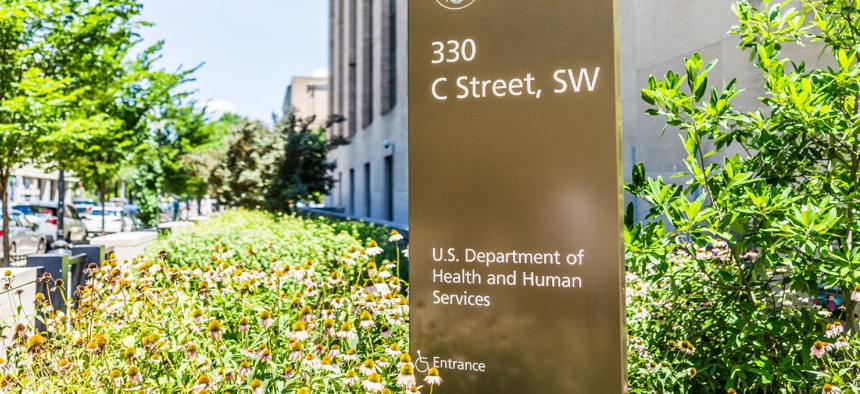
krblokhin / iStock.com
Watchdog: HHS Should Update Congress on COVID-19 Spending Time Frames
GAO offers 15 new recommendations for improving the federal government’s pandemic response.
To bolster oversight, the Health and Human Services Department should provide Congress with expected time frames for spending the remainder of its coronavirus relief funds, a watchdog recommended on Monday.
The Government Accountability Office published its seventh extensive report on how the various federal agencies can improve their pandemic response and preparedness for future outbreaks. Congress appropriated about $484 billion between six relief laws for the Health and Human Services Department, which is central to the COVID-19 response and includes the National Institutes of Health, Food and Drug Administration, and Centers for Disease Control and Prevention. For the first five laws (HHS received $324 billion in total) about $253 billion was obligated (about 78%) and about $168 billion was expended (about 52%), as of May 31. For the most recent law, the American Rescue Plan, HHS received $160 billion and about $75 billion was obligated (about 47%) and $3 billion was expended (about 2%).
GAO found “HHS uses ‘spend plans’ to communicate information about its COVID-19 spending.” The first five relief laws “generally” mandated that HHS “develop, update, and provide these spend plans to Congress every 60 days,” but the sixth one does not, said the report. HHS officials told GAO “the department is preparing a consolidated plan that captures the first five relief laws and a separate spend plan for funding provided through [the American Rescue Plan].” The consolidated plan is under internal review and the separate one for the more recent law is still getting finalized.
GAO received 15 of HHS’s spending plans (which includes the original plans and updates); however, “the most current spend plans generally do not include time frames for obligating the remaining relief funds, which is useful information for oversight and for informing Congress’s future funding decisions.”
For example, about 25% of the appropriations for the provider relief fund were unobligated, as of May 31, and HHS’s Health Resources and Services Administration “has not provided time frames for obligating this balance,” said the report. The provider relief fund reimburses eligible health care providers for COVID-19-related health care expenses or revenue losses and represented 37% of HHS allocations from the six coronavirus relief laws.
As a result of the review, the watchdog recommended that HHS include the estimated time frame for the spending of the coronavirus funds in the plans it sends to Congress. GAO noted that the Office of Management and Budget released guidance in April 2020 directing agencies to quickly distribute coronavirus relief funds, but also ensuring transparency and accountability to protect taxpayer dollars. Separately, President Biden has called for “fastidious oversight” of coronavirus funds.
HHS partially agreed with this recommendation. While it said it would include some of the time frames, such as specific grants to states, due the “evolving environment” it will not be able to do that for all plans. GAO also gave OMB an opportunity to comment on the recommendation, but OMB did not give any input. HHS’s use of coronavirus funds is under scrutiny not only from Congress and GAO, but also the department’s inspector general, which has several ongoing reviews.
There are a total of 15 recommendations in GAO’s new report.
“Today’s GAO report underscores the great progress that has been made by the Biden-Harris administration, but also confirms that we must not lose sight of the work that remains to be done to save lives and fully recover from the pandemic,” said Rep. James Clyburn, chairman of the House Select Subcommittee on the Coronavirus Crisis, in a statement. “GAO’s recommendations regarding coronavirus vaccinations, enhanced testing, improvements to our Strategic National Stockpile, financial relief and protections for American workers are critical.”







